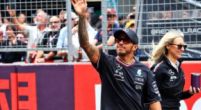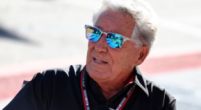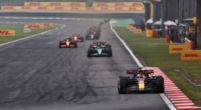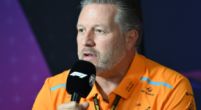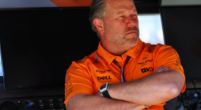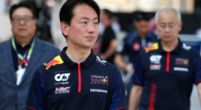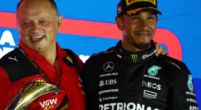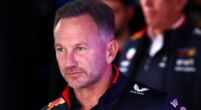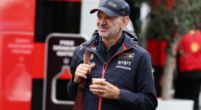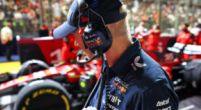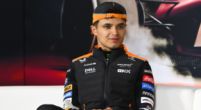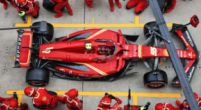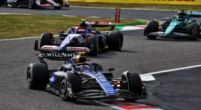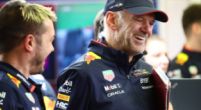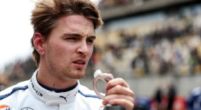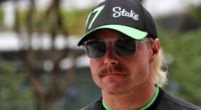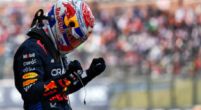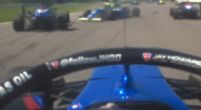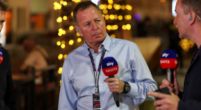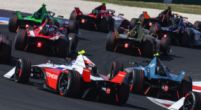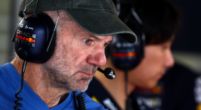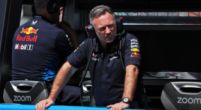Tech

F1 tech: What's behind Ferrari's victory and McLaren's performance
The Singapore Grand Prix is usually known for being the longest and toughest race (for the drivers) on the calendar, but it’s often been a race where emotional twists and turns were not frequent. However, this year’s edition gave us one of the most exciting weekends of the whole season: the Red Bulls struggled from Friday onwards, failing to be competitive, while Ferrari, McLaren and Mercedes fought their hearts out to win Sunday’s race.
Behind this great show, there were technical choices by the top teams that made the difference both in qualifying and in the race; we’ll try to explore them here below.
Ferrari's impressive performance and McLaren's updates worked
There's a lot to talk about regarding Ferrari's weekend: after a great performance last time in Monza, the Maranello team had the impression they could do well on a high downforce track like Singapore, even though they weren’t expecting to get the first non-Red Bull win of the year with Carlos Sainz.
The SF-23, in fact, has always been strong in stop-and-go and rear-limited circuits, like Bahrain, Baku, Canada and Austria. These are also tracks where there are very few high-speed corners, where the car is really unstable and slow if compared to their competitors. At the beginning of the weekend, they were afraid of the tyre degradation, their Achilles’ heel since the start of the season. However, the car looked extremely fast straight away.
Ferrari front wing
In FP1, both Carlos Sainz and Charles Leclerc had a new front wing of their car. The last flap has changed since Zandvoort, as the Italian team returned to the configuration seen at the beginning of the year. The last flap has a more wavy shape in order to guarantee a high aerodynamic load (it was glued to a Gurney flap), but at the same time, it favoured the out-wash effect.
Precisely this wavy trend serves to push the flows towards the outside of the front wheel, reducing the turbulence generated by the latter. This solution allowed the team to use the highest downforce rear wing (which had previously been used only in Monaco and Hungary), which provided great rear stability and traction. This allowed the Ferrari’s drivers to manage the tyres brilliantly.
Between FP1 and FP2, the team reduced the ride height, and the car reacted perfectly. This generated a lot of grip in every sector. The drivers managed to get on and off the kerbs very easily, without the car complaining. This set-up allowed Carlos Sainz and Charles Leclerc to fight for pole on Saturday, and they eventually grabbed P1 and P3, respectively.

During the race, the SF-23 behaved very well, as it was quick on both the medium and the hard tyres. Carlos Sainz really made the difference: in fact, he was smart enough to keep McLaren’s Land Norris in his DRS zone for about 15-20 laps, taking advantage of Marina Bay’s few overtaking spots and making it even more difficult for the Mercedes to come back at him. He eventually got the 2nd win of his career. The Spanish driver said after the race: “We did everything right this weekend and in the race, too. We did everything we had to do. We did it perfectly and took home the win, something all of Italy and Ferrari will be proud of today [...] It was very close at the end. We gave Lando a bit of DRS to help him, and in the end, it worked."
This was a great result for the whole team, who are now hoping to confirm their performance at Suzuka. It's a track that could be more difficult for them due to the front being very weak if stressed for a long time on long and fast corners, as happened in Silverstone.
McLaren updates
Both Lando Norris and Oscar Piastri drove an outstanding race. The Brit was able to get to P2 after Mercedes’ late pitstop and tried to have a go at Sainz, but had to settle for second at the end. Oscar Piastri managed to finish 7th after an unlucky qualifying that put him in 17th spot. For the Singapore Grand Prix, the Woking team brought a significant upgrade package, available for only Land Norris this weekend (Piastri will have it in Japan next week).
The MCL60 has always been a good car in the high-speed corners but lost time in the low speeds. Among the new parts, there was a rear wing with a cut in the endplate transition, with a metallic support on the top that ensured wing stability in the DRS opening and closing phases. As already said for the Red Bulls before, this solution should help reduce the drag without losing downforce.
There was a completely re-designed sidepod, cooling inlet and floor. The floor edge has been inspired by Red Bull, as it now runs at the full floor edge length, and the extra length is crucial as it adds vorticity to the primary floor vortex. This ensures an excellent seal for the airflow behind the car and improves diffuser performance downstream.
Moreover, the new cooling inlet has been narrowed to reduce drag, without compromising the cooling of the radiating masses and the vital organs of the Power Unit. This solution has thus allowed the creation of a much larger undercut, which provides greater linear airflow towards the beam wing and the diffuser. It creates the effect of a "double ground effect". In this area, the "humps" at the SIS are covered with a new fairing.
This helps to divert the flows outwards, pushing the turbulence coming from the wheels away. The last change was related to the sidepod “waterslide”, which ensures consistent delivery of high-energy air over the beam wing and between the tyre contact patch and diffuser, resulting in consistent rear downforce. All these solutions really made the car a lot better in the slow speed sections. It really worked, as Norris pointed out after qualifying: "The team have done a great job, so I’m proud of everyone.” The race confirmed his words, as he was able to fight for the win until the very last lap, as he managed the tyres brilliantly over the two stints and really gave everything.


McLaren are a great example of how much a project can evolve throughout the year and, looking at where they were in Bahrain, it only gives credit to the whole team that work on this car. They improved almost all their weak points, making the MCL60 a car that can fight for podiums at almost every race. For the Papaya team, the Japanese trip to Suzuka could be a great one, since their car is very good on that kind of layout, and the new package could make them fight for a victory.
Last but not least, a nod to Mercedes, which, despite not having anything new, managed to find the ideal setup to fight for pole position on Saturday and for the victory on Sunday. In fact, in the race, they tried a different strategy which didn't work, since George Russell hit the wall during the last lap, and Lewis Hamilton only got P3. They proved their car can really suit this track and all the high downforce layouts to the end of the season.
In conclusion, the Singapore Grand Prix was a unique race that we will certainly remember, but for now, our attention is focused on the beautiful and technical Suzuka Circuit, where F1 will return to make a stop next weekend, hoping to see some great battles and a few technical updates.
This article was created by Francesco Bianchi. Francesco is an Italian engineering student fond of drawing and F1's technical details. He has been studying engineering since 2021 and started watching Formula 1 in early 2016. Francesco enjoys learning the workings of every small part on the cars.


